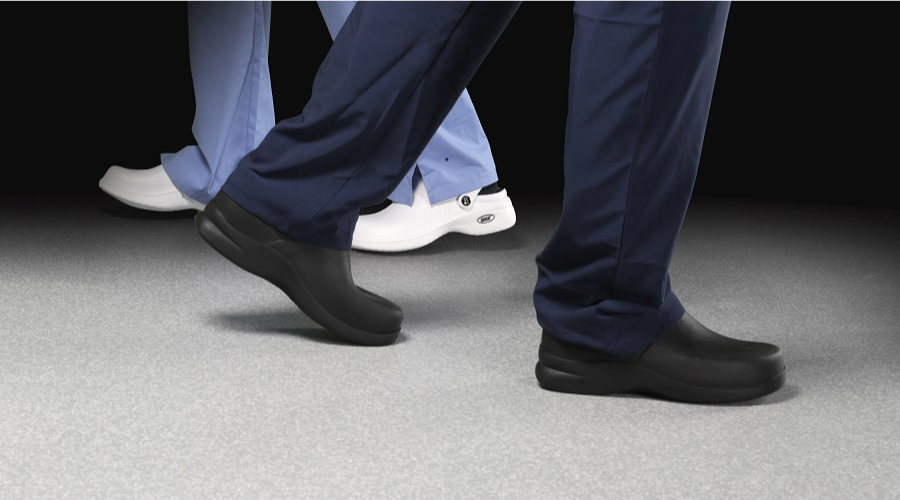Table of Contents:
Table of Contents:
Water issues and water damage are some of the most common concerns commercial and industrial facilities deal with when it comes to their floors. Whether it is protecting against moisture, everyday splashes and spills, flooding, or puddling, water is a fierce adversary. Selecting the right products and taking the right steps from the beginning are the best ways to avoid loss of time and money.
Today, we’re talking about waterproofing concrete. We sat down with Stonhard Product Manager, Stephen Pattison, to talk about what waterproofing really means and how to go about waterproofing your facility.
Q: It is common for industrial and commercial facilities to want to 'waterproof' their floors, but there is a difference between waterproof and water resistant. Can you tell us about that?
Pattison: All Stonhard systems are water resistant. Water resistant means that the floor can resist the penetration of water. For instance, water-resistant floors can stand up to spills and splashes and other encounters with water, but the long-term resistance will depend on many aspects such as the installation details and system used.
Waterproof floors are impervious to water from the positive side. In other words, if you were to pour water on the finished system, water will not get underneath the system. Floors should only be considered waterproof when a neat layer of a flexible urethane membrane is included in the system. Flexible urethane membranes make a system waterproof because they have strong crack-bridging capabilities. These membranes are flexible enough to handle movement in the slab to prevent cracking. Cracking in the slab creates a penetration through the installed system that exposes the slab to the water. If the slab is exposed to water, the waterproofing of the floor is jeopardized.
Q: What kind of facility would require true waterproofing, not just water resistance as needed for splashes and spills?
Pattison: Many industrial and commercial spaces need waterproofing to protect moisture damage. An area where it is crucial to have proper waterproofing would be areas below potential water sources such as computer server rooms, mechanical rooms, or any space that houses expensive equipment that the customer may want to protect. For example, if a facility has electronics underneath an area and wants to prevent these electronics from getting wet, positive-side waterproofing may be required to protect the electronics from water.
Any general commercial interior could be equipped with waterproof flooring to protect people, equipment, and the other connecting rooms and spaces. This includes office buildings, healthcare facilities, retail environments, schools, and more.
Stonhard's Stondeck is the ideal solution for outdoor waterproofing needs, while Stongard is the ideal solution for indoor waterproofing needs.

Seamless and waterproof floors like Stongard MR are designed to protect against spills, moisture, and wear for long-lasting durability.

Seamless, waterproof floors provide superior protection even in exterior environments.
Q: Can you describe the difference between concrete sealers and concrete waterproofing materials?
Pattison: Concrete sealers are usually much thinner systems and do not provide the same physical properties waterproofing materials would. Waterproofing materials provide superior crack-bridging capabilities and can handle movement in the slab far better than concrete sealers, which is what helps to prevent cracks.
Water can be very damaging to concrete, threatening the longevity of the slab. When water freezes and thaws it contracts and expands. If water permeates into concrete, the expansion and contraction caused by thermal cycling may cause cracking or spalling in the concrete. If the slab is waterproof, this will not occur because no water will penetrate the slab. Concrete waterproofing systems will increase the longevity of concrete compared to concrete sealers.
Another bonus to Stonhard’s waterproofing systems is that they exhibit far superior chemical resistance to most of the concrete sealers.
Q: Are there different types of waterproof flooring systems?
Pattison: Stonhard has waterproof membranes formulated for specific conditions. Stonproof ME7, a two-component, liquid-applied urethane waterproofing membrane, is for indoor use only. For outdoor use, Stonhard manufactures and installs Stonproof XT7, a polyurethane/polyurea hybrid membrane, for use in conjunction with Stondeck systems. Stonhard also offers Stonchem 441LV a durable, elastomeric polyurethane/polyurea hybrid membrane, for use in conjunction with systems like Stongard TM.
Q: How do you successfully waterproof an area?
Pattison: When waterproofing an area, it’s important to ensure any potential penetrations are treated properly. This includes areas like joints, cracks, the perimeter where the horizontal meets the vertical, and screws and bolts in the floor. These are all aspects of an installation that need to be considered and attended to, especially when waterproofing is expected. Always read the installation directions and consult the Technical Service team to help address these details.
Q: How long does it typically take to install a waterproof flooring system?
Pattison: It depends on the size of the area, number of people installing the system, and the system that is used. For example, let’s take a 4,000 square foot area where Stondeck FD4 is to be installed. Stondeck FD4 is a waterproofing system used for exterior areas supporting vehicular traffic. This installation would take around five days from prep to finished system.
Q: How long will a waterproof flooring system last?
Pattison: This is a tricky question, as it will depend on many things such as the amount of abuse the floor endures on a daily basis, the environment the floor is in, slab movements, thermal change and more. As long as there are no penetrations in the floor, the floor will remain waterproof.
Thanks for your time and in-depth illustrations on waterproofing, Stephen.
Customers who require waterproof flooring systems or any floor or wall system formulated specifically for their environment work with Stonhard directly from start to finish. Stay tuned for our next installment in our “Water and Your Floor” series. Did you miss our first article? Read it here.
ABOUT STONDECK
Stonhard’s Stondeck systems use urethane technology that is specially formulated for vehicular traffic in demanding environments Stondeck systems use urethane technology that is specially formulated for vehicular traffic in demanding environments like parking structures (parking decks and parking garages), as well as pedestrian structures.
ABOUT STONGARD
Stonhard’s Stongard waterproof decking and membrane floor protection for mechanical equipment rooms, pump mezzanines, and more, is available in epoxy and urethane formulations.
Click here to request a site visit to get recommendations on a waterproof flooring system for your facility.
About Stonhard
Stonhard is the unprecedented world leader in manufacturing and installing high-performance polymer floor, wall and lining systems. Stonhard maintains 300 territory managers and 200 application teams worldwide who will work with you on design specification, project management, final walk-through and service after the sale. Stonhard’s single-source warranty covers both products and installation. Contact us to learn more about our precision installation methods and specialized products.
Related Articles
Loving this Content?
Subscribe to upcoming topics!











